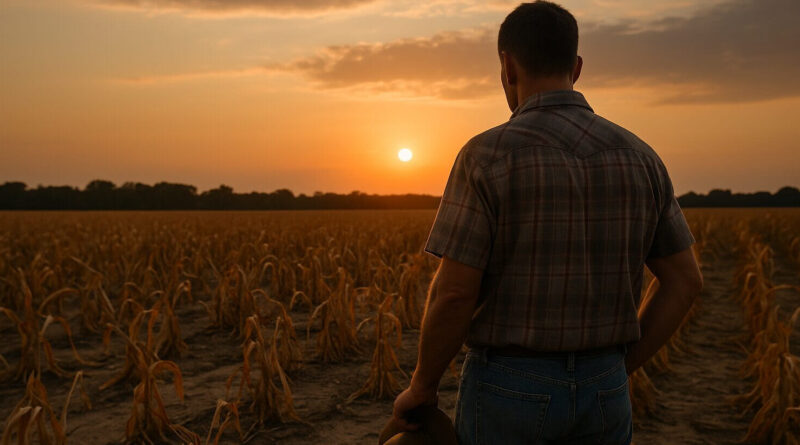Local Farmers Decry Challenges as Corn Prices Fall to Historic Lows
Eudora, MS — August 12, 2025. It’s been a relentless year for growers across the heartland—one blow after another in what’s quickly become a year farmers would rather forget.
Wet Spring, Poor Root Development
First came the wettest spring on record. Nearly all of this year’s rainfall poured in during the first half, leaving fields saturated and planting delayed or done under less-than-ideal conditions. That left crops with shallow, poorly developed root systems—set up to struggle when the summer heat and dryness arrived.
Dry Spell and Crop Collapse
After that soggy start, summer brought a sharp dry spell. Without deep roots to tap into moisture, those young plants hung on—but only barely. “The corn is giving up the fight,” some farmers lamented, as parched stalks began to wilt under weeks of stress.
USDA August WASDE Report Sends Corn Prices Tumble
Then came today’s USDA August WASDE (World Agricultural Supply and Demand Estimates) report, released August 12, 2025. The agency stunned the market:
- Record U.S. corn yield: 188.8 bushels per acre—a major jump from July’s 181 and far above 2024’s 179.3 bpa.
- Record production: 16.7 billion bushels—about 800 million more than expected, and the largest ever.
- Ending stocks balloon: Up to 2.117 billion bushels—an increase of 457 million from July and the highest level since 2018–19.
- Price forecast slashed: USDA lowered the season-average corn price to $3.90 per bushel, down 30 cents from last month.
Markets reacted swiftly—December 2025 corn futures dropped below $4, sinking into multi-month lows.
Fertilizer Costs Add to the Pain
As if collapsing prices weren’t bad enough, input costs are soaring. DAP (Diammonium Phosphate) fertilizer has spiked so dramatically that now it takes more bushels of corn to buy one ton of DAP than ever before. Farmers are facing a historic squeeze—high costs wrapped around plummeting crop prices.
What’s Next?
With supply surging and prices diving, margins are razor-thin. Fertilizer remains expensive, while corn revenue is shrinking fast. In many areas, fields are drying up just as pricing collapses—an ominous combination for this year’s bottom line.






